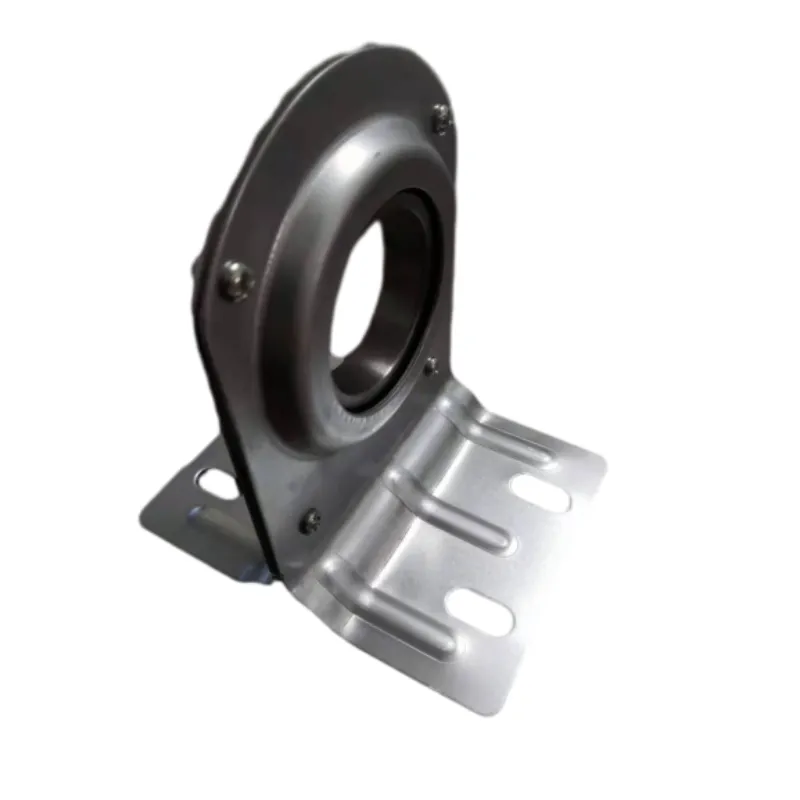
Dec . 03, 2024 18:17 Back to list
cylindrical roller bearing vs ball bearing
Cylindrical Roller Bearings vs. Ball Bearings A Comprehensive Analysis
Bearings are essential components in various mechanical systems, serving the primary function of reducing friction between moving parts. Among the different types of bearings, cylindrical roller bearings and ball bearings are two of the most commonly used. While both serve similar functions, their designs and applications vary significantly, and understanding these distinctions is crucial for selecting the appropriate bearing for specific applications.
Design Characteristics
Cylindrical roller bearings are comprised of cylindrical rollers that are positioned between an inner and outer ring. The rollers have a larger contact area than the balls used in ball bearings, which enables them to support heavier loads. This characteristic is particularly beneficial in applications involving high radial loads. The rolling elements in cylindrical roller bearings are designed to maintain a high load-carrying capacity while minimizing friction, thanks to their line contact with the raceways.
On the other hand, ball bearings feature a series of spherical balls that roll between the inner and outer rings. The design of ball bearings allows them to handle both radial and axial loads, making them versatile in varied applications. However, the point contact between the balls and the raceways results in a relatively lower load-carrying capacity compared to cylindrical roller bearings. This design is ideal for applications where size and space constraints are critical.
Load Capacity
When it comes to load capacity, cylindrical roller bearings generally outperform ball bearings. The increased contact area between the roller and raceway allows cylindrical roller bearings to bear higher loads while maintaining lower stress on the rolling elements. This makes them particularly suitable for heavy machinery, such as gearboxes, electric motors, and industrial equipment that experiences substantial loads.
In contrast, ball bearings, while capable of handling both axial and radial loads, are typically limited in their load capacity. They are more suitable for applications that require high speeds and lower loads, such as in small electric motors, household appliances, and automotive applications where space is limited. The versatility of ball bearings enables them to operate efficiently across a range of applications, influencing their widespread use.
cylindrical roller bearing vs ball bearing

Speed and Performance
Both types of bearings offer unique advantages regarding speed and performance. Ball bearings are well-known for their ability to handle high rotating speeds, making them an ideal choice for applications such as high-speed spindles and fan motors. The reduced friction generated by the spherical balls allows for smooth and efficient operation, resulting in lower heat generation at high speeds.
Cylindrical roller bearings, however, are designed to excel under high radial loads rather than high speeds. They can operate at moderate speeds with excellent durability, making them suitable for heavy-duty applications. While advancements in materials and manufacturing processes can enhance the speed capability of cylindrical roller bearings, they still do not match the high-speed performance of ball bearings.
Maintenance and Longevity
Both bearing types require regular maintenance to ensure optimal performance and longevity. However, cylindrical roller bearings are often more sensitive to misalignment and require precise installation to avoid premature wear. In contrast, ball bearings tend to be more forgiving in terms of misalignments and can maintain functionality over a broader range of conditions.
The choice between cylindrical roller bearings and ball bearings ultimately depends on the specific requirements of the application. For heavy loads and durability, cylindrical roller bearings are the better choice, whereas for high-speed applications with lower loads, ball bearings come out on top.
Conclusion
In summary, both cylindrical roller bearings and ball bearings have their own distinct advantages and applications. Cylindrical roller bearings are the go-to option for high load capacities and robustness, while ball bearings are ideal for applications that require high-speed performance in a compact design. Understanding these differences is crucial for engineers and designers looking to optimize equipment performance and reliability. The right choice can lead to significant improvements in efficiency and longevity, ultimately contributing to the overall success of mechanical systems.
Latest news
-
Premium Deep Groove Ball Bearings | High Speed & Reliability
NewsAug.29,2025
-
Durable Scaffolding Clamps - Secure & Reliable Tube Connectors
NewsAug.28,2025
-
Common Failures in Thrust Ball Bearings and Solutions
NewsAug.22,2025
-
How Tapered Roller Bearings Can Take Shock Loads
NewsAug.22,2025
-
Angular Bearings in High-Precision Spindles
NewsAug.22,2025
-
The Impact of Misalignment on Cylindrical Roller Bearing Performance
NewsAug.22,2025
